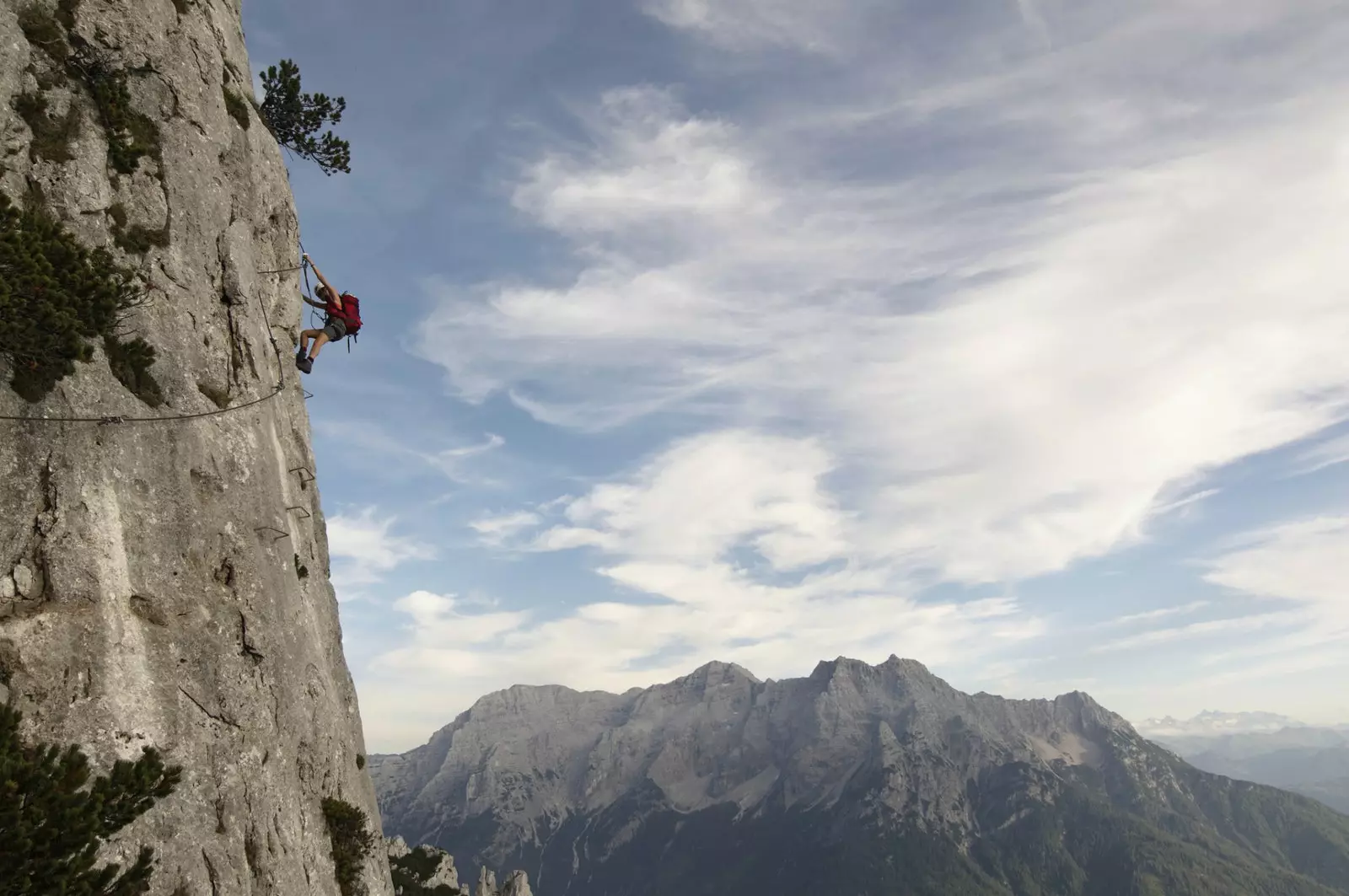
Do you think you are ready to climb a via ferrata?
Officially, a via ferrata is a mountain itinerary equipped with steps, rails, ramps and cables that hug the surface of the rock to help progress vertically and ensure the safety of those who venture to climb it. Unofficially, it's a fast-paced way to challenge yourself and get a serious adrenaline rush.
We could also add (with many nuances) that it is a experience halfway between mountaineering and climbing, the ladder between walking up a mountain and climbing with your arms and legs to reach a summit by your own means.
When you are not a professional, the ideal, in addition to renting the necessary material, is to promote it accompanied by an expert guide, to whom you will be roped and that it will take care of doubling the security during the progression.
Before choosing a via ferrata or another, you must assess your physical abilities (also mental, do not forget it), in order to hit the level of difficulty that you will be able to overcome. The good thing is that there is a classification system, which is governed by the new Hüsler scale, which will help you not to get confused: K1 (easy) , K2 (somewhat difficult) , K3 (somewhat difficult) , K4(difficult) , K5 ( very difficult) and K6 (extremely difficult) .
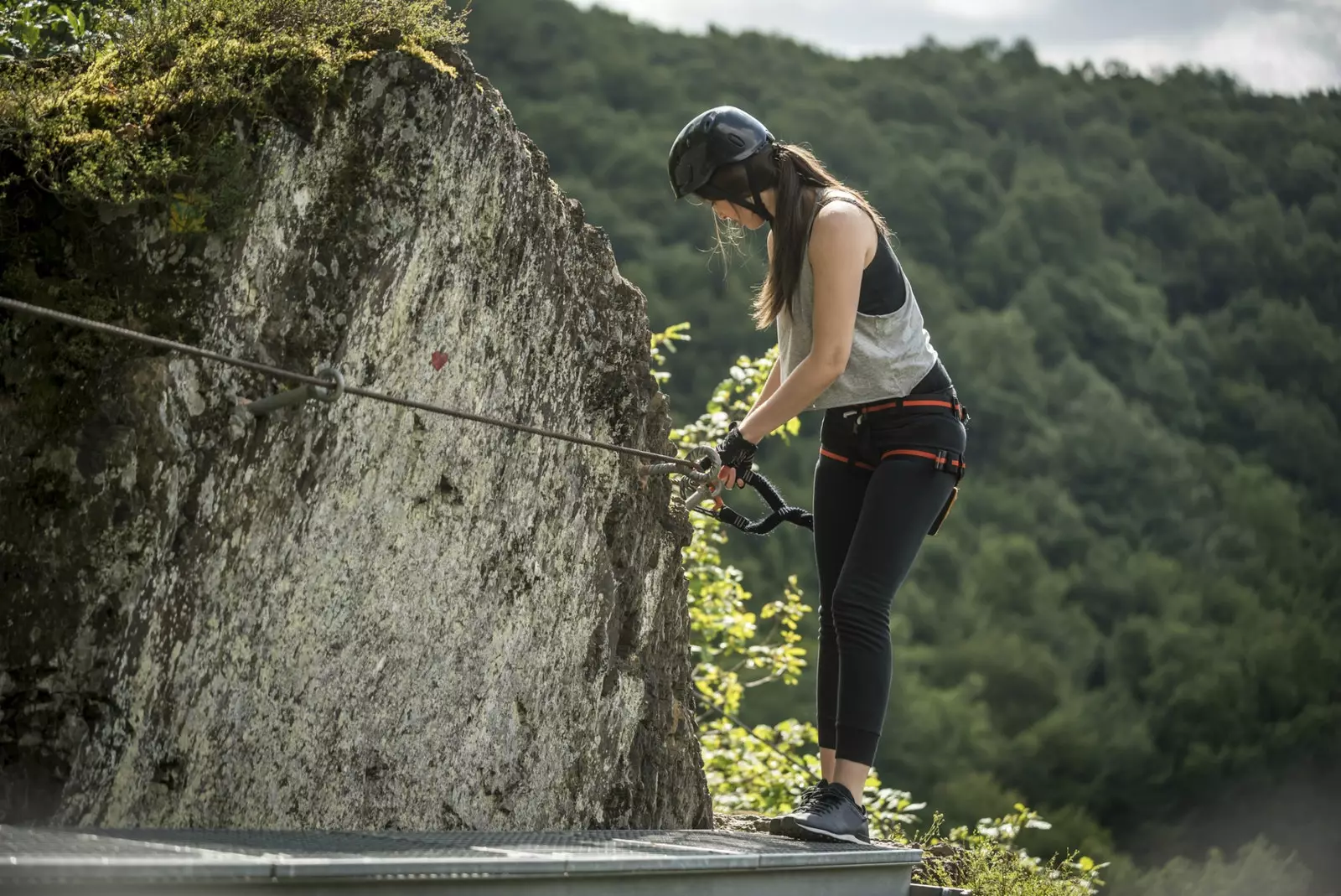
At all times you will be hooked to the cable by means of an energy sink.
THE MATERIAL
To the comfortable clothing and footwear –appropriate to the season of the year in which you find yourself– you should add a helmet and fingerless leather gloves for a better hold on the rock and the steps.
Then you must put a harness that will keep you connected at all times to the 'life cable' that runs through the via ferrata, this will be done by means of an energy dissipator prepared to absorb the force of the shock in the event of a fall (most are adapted to people weighing between 45 and 100 kg).
In the form of a Y, one end of the heat sink will be attached to the harness with a lark's knot and the other two ends (two straps ending in two special carabiners) must always be attached to the safety cable. Some have a 'third baga' or braking line that can be used to Anchor yourself to a step or a staple in order to find a comfortable position and relax your muscles.
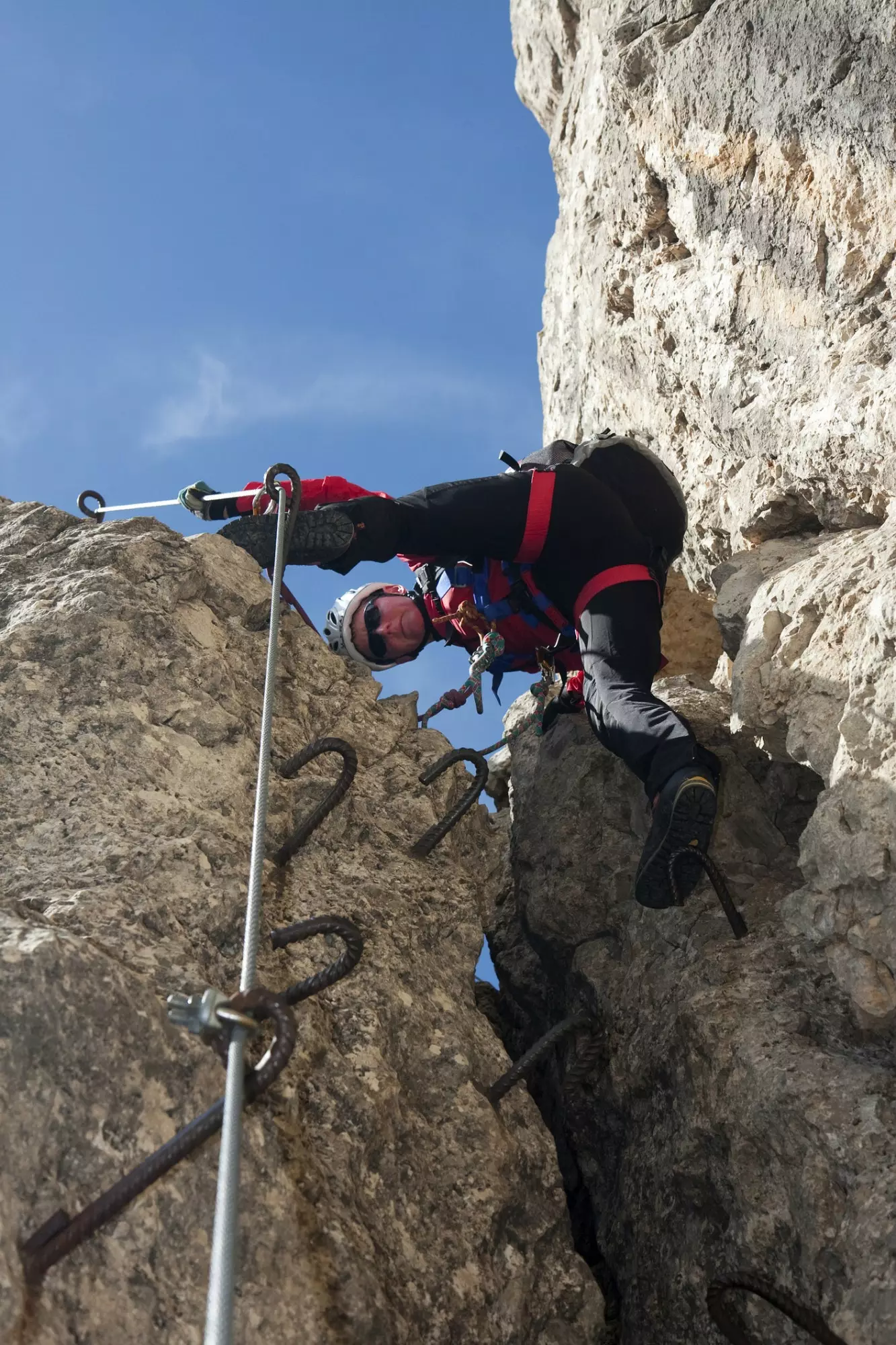
Ascending the steps of a via ferrata in the Dolomites.
THE WAY TO PROGRESS
As we have already said, the route of the via ferratas (ascent) is accompanied by a 'life cable' – to which we must always be hooked and as far as possible not grab onto it with our hands – which is divided in sections. For this reason, every few meters the fixed anchors will appear (that hold the cable to the rock) that we will have to overcome one by one in order to keep moving forward.
The mechanics are very simple, but it is essential to internalize them so as not to be unnecessarily frightened: we must release one of the dissipator carabiners from the section of cable that we left behind and anchor it to the next section to then release the other carabiner and do exactly the same. Never, we repeat, never have to release the two carabiners at the same time.
The triggers of the carabiners should face us and not towards the wall (at most, one can look inwards and the other outwards) and there can never be more than two people in the same section of the wire. This same action will accompany us throughout the via ferrata, either by steps up or parallel, walkways, stairs or bridges.
Although it may seem otherwise, force will not be decisive when it comes to moving forward, In fact, we should not only use it, but also balance (mental and physical), dexterity, coordination and concentration. In case we have made a mistake and have wasted energy, the third rope can help us hold on and rest for a while. Remember: in the mountains there is never a rush!
oh! And if you regret it half way or feel fatigued or exhausted, there are escape routes to be able to descend the mountain and return to the point of origin on foot.
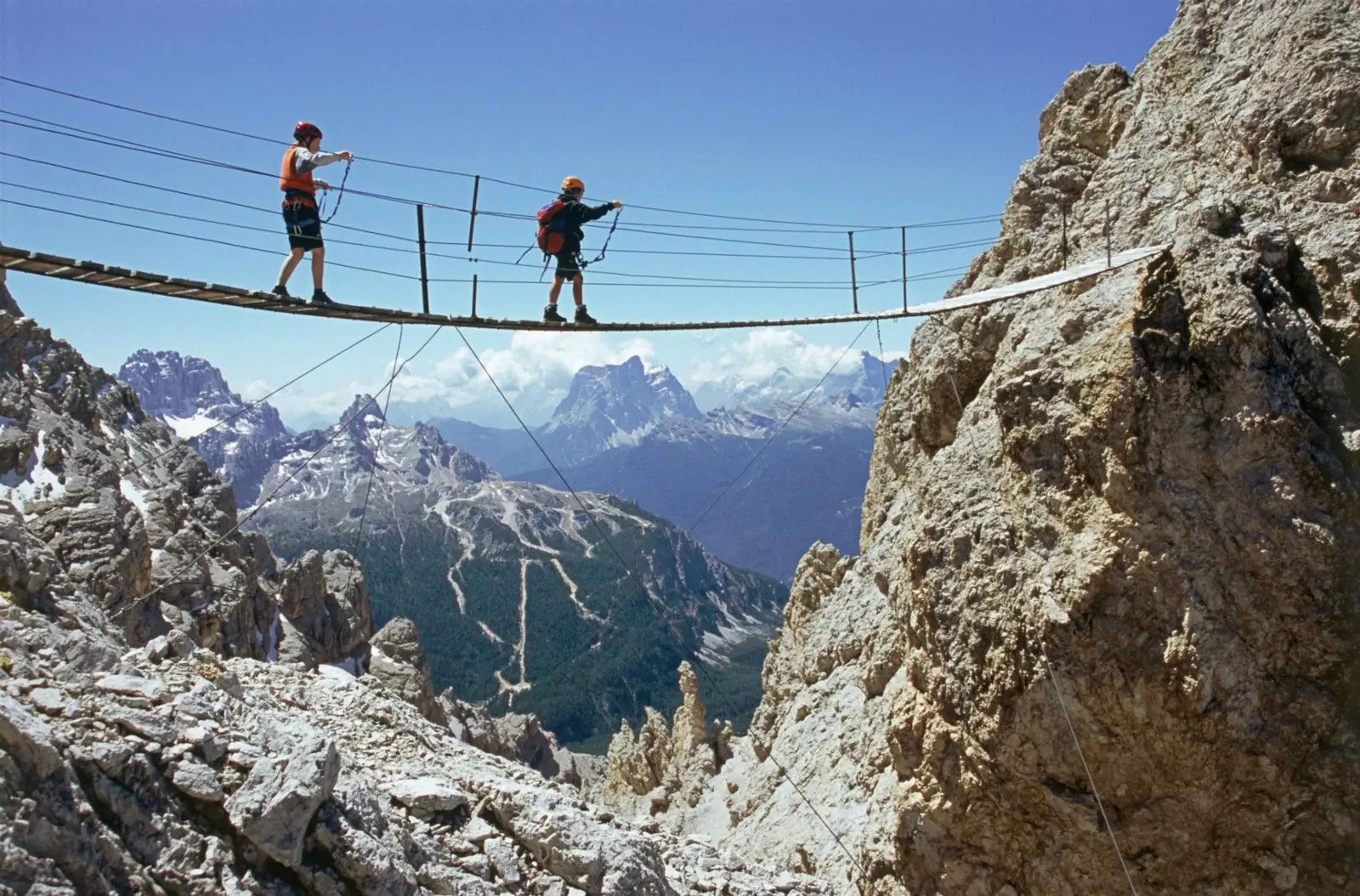
Tibetan bridge of a via ferrata.
SOME UNIQUE VIA FERRATAS
In Aragon there are countless K1-type via ferratas, such as Santa Elena de Biescas, which is perfect for beginners in this discipline, since it is very short (it lasts about 20 minutes) and i Includes other extras such as Civil War trenches, a bunker and, at the end of the route, the small hermitage of Santa Elena and its famous healing waters.
The Santamera Stairs to Heaven via ferrata (in the northern mountains of Guadalajara) may not be the most exciting of all, but the infinite ladder that makes us reach the top of the summit hill is, to say the least, singular.
If not for a little crash about half way up and over the new tibetan bridge of the Vía Ferrata Flores y Lagunas Valle de Arbas, in León, we could say that this route – which includes traverses, aerial spurs and simple climbing – is of type K2. However, and waiting to add even more excitement with a second bridge that is about to be built, Guillermo, an expert climber and owner of the company Naturocio Valle de Arbas (which offers equipment rental for €15 and guided tours of the via ferrata from €39), confirms that it is classified as K3.
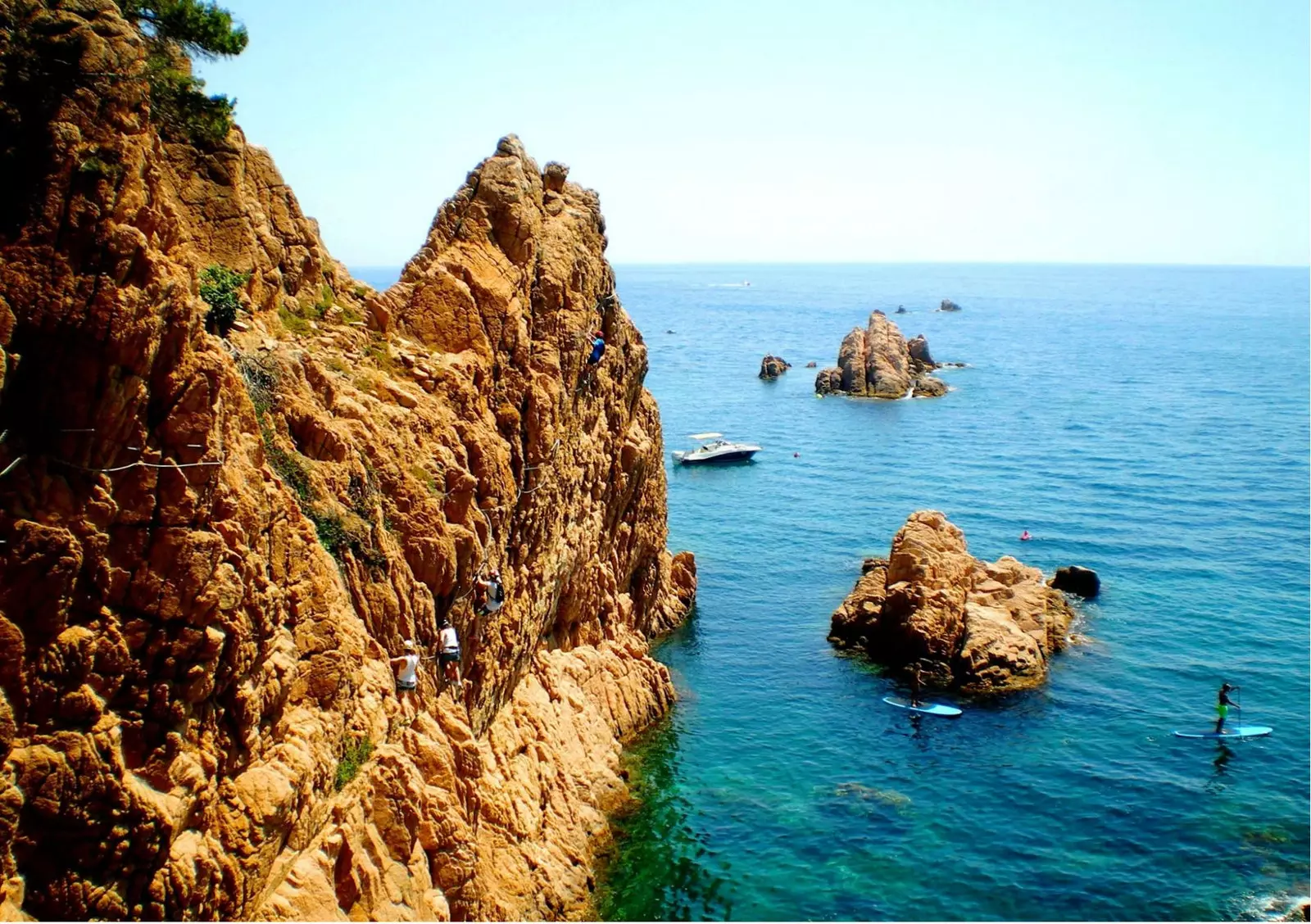
The via ferrata of Cala del Molí runs over the sea, on the cliffs of the Costa Brava.
Undoubtedly, the via ferrata of Cala del Molí (from €25), in Sant Feliu de Guíxols (Girona), is also peculiar. the only one in Europe that runs over the sea, specifically between the cliffs of the Costa Brava. Medium level (K3), it has two different sections: one (K2) in which the climb is in a horizontal traverse and another that is gaining height and that will require greater technique and physical strength. An extra are its five suspension bridges: three Tibetan, one Nepalese and one trunk.
On the Cantabrian coast, the Valdeón via ferrata stands out, cataloged as K4 and **located within the Picos de Europa National Park. ** And with views of the eastern massif from Cantabrian territory, we find the Camaleño via ferrata, in the town of Los Llanos (between Potes and Fuente Dé): the views are the best; the worst, its complicated overhangs (which go beyond the vertical, 90º) that make it her final stretch on a K5. PicosXtreme offers the tour from €29.
If you have reached this point, it is because you are already an expert climber and you know that if we say Merry Christmas we are not congratulating you on the holidays belatedly, but rather we are talking about what they say is the most difficult sports via ferrata in our country. Others, on the other hand, prefer to give this title to the via ferrata Cágate Lorito (ahem), also located in Lleida.
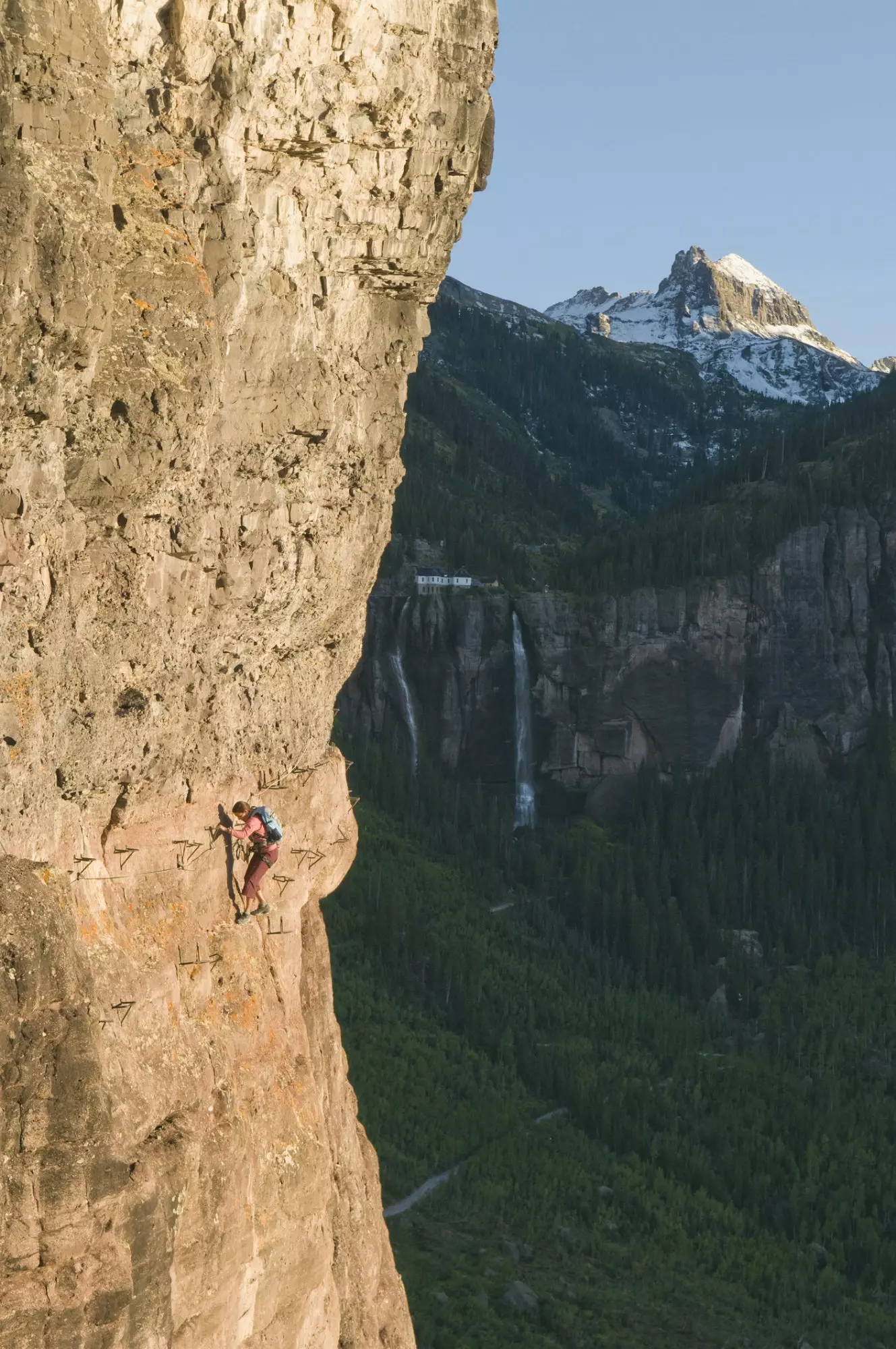
There are via ferratas, like this one in Colorado, not suitable for all audiences.
OUTSIDE OUR BORDERS
We have already told you on some occasion about the via ferrata that must be overcome to reach the hanging cabins at 400 meters high of Skylodge Aventures Suites, in the Sacred Valley of Peru, but just as picturesque and remote are the ferratas of Chang Kong – the oldest in China, as you can see by its wooden walkways worn for hundreds of years – and the Low's Peak Circuit, on Mount Kinabalu in Malaysia, which boasts of being the The highest via ferrata in the world to finish its journey at 3,776 meters high above sea level.
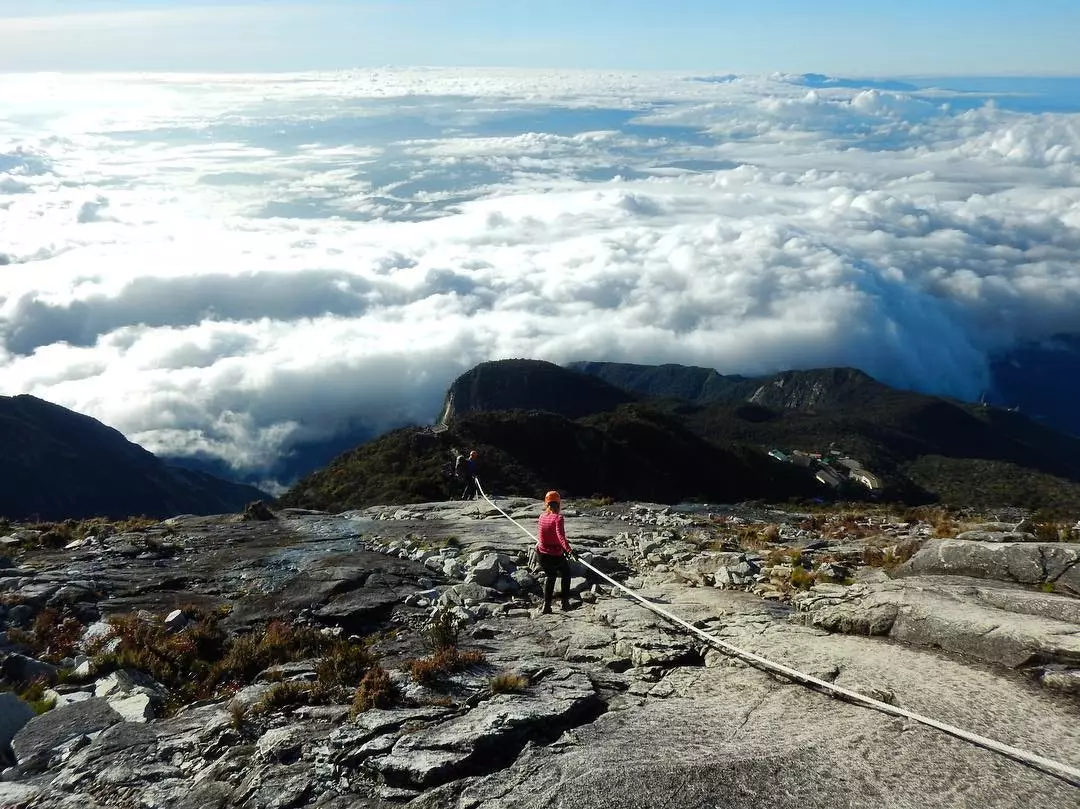
The Low's Peak Circuit in Malaysia is the highest via ferrata in the world.
On the other hand, the most classic will prefer some of the most common European routes among climbers, such as the long (almost 1,500 meters of cable) and complicated (you have to descend a glacier and even use crampons) Super Ferrata Dachstein, in Austria, or any of the via ferratas that hug the Dolomite mountains, in northern Italy: from the unchallenging Via Ferrata Santner to the intimidating and historic Scala del Minighel.
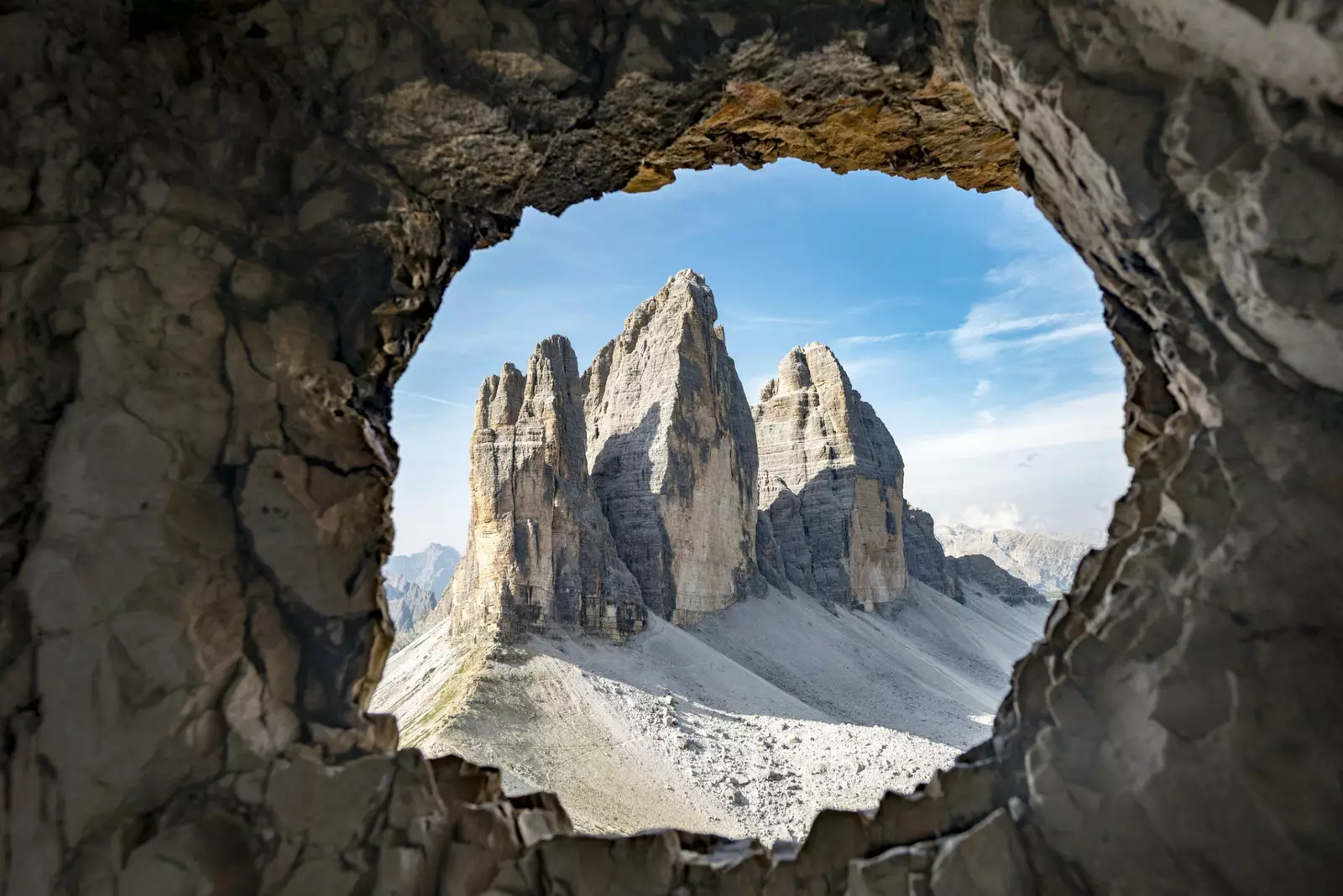
Views from the Paternkofel via ferrata, on Monte Paterno, Italy.
